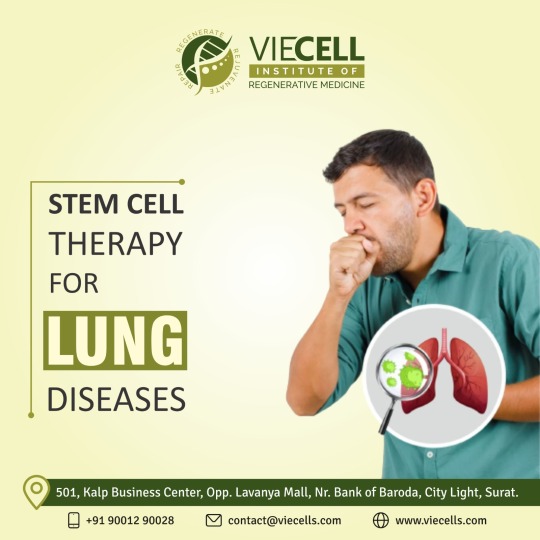#celltherapy
Text
youtube
#EGR3#CancerResearch#TumorProgression#SchwannCells#CellDifferentiation#CancerInhibition#TumorSuppression#GlialCells#CellTherapy#Metastasis#PhenotypicShift#CancerBiology#TumorGrowth#CellReprogramming#NeuralRegeneration#CancerTreatment#DifferentiationTherapy#TherapeuticTargets#TumorBiology#OncologyResearch#Youtube
2 notes
·
View notes
Text
What You Need To Know About Causes Of Liver Disease?
Liver disease | Hepatitis | Cirrhosis | Fatty liver disease | Liver failure | Liver fibrosis | Alcoholic liver disease | Liver regeneration | Liver stem cells | Best Treatment For Liver Disease | Stem Cell Treatment For Liver Disease | Exosome Therapy | Regenerative Medicine | Stem Cell Therapy Center For Liver | Organ Disease |
There are many different types of liver disease, each with their own unique set of causes. However, there are some commonalities among the various types of liver disease that are worth noting. Firstly, liver disease is often caused by excessive alcohol consumption. This can damage the liver cells and lead to scarring of the organ, known as cirrhosis. Obesity is another major risk factor for developing liver disease, as it can lead to fatty deposits building up in the liver and eventually causing inflammation. Viral infections such as hepatitis C are also a common cause of liver disease and can result in chronic inflammation of the organ.
https://shorturl.at/EhzqA
Email id- [email protected]
Ph no- +91 9650760803
#stemcelltherapy#stemcells#regenerativemedicine#liverdisease#chronicliverdisease#advancemedicine#stemcelltreatmentforliverdisease#liverstemcells#livertransplantation#liverfunction#celltherapy#cirrhosis#fattyliver#liverfibrosis#alcoholicliverdisease#beststemcellcenterinindia#specializeg_growt_factor#supsupportive_therapy#exosometherapy#dietconsultant#physiotherapysession
2 notes
·
View notes
Text
Healthy Weight, Nutrition, and Physical Activity for weight loss.
Start The Journey For Reduce Or losing weight:
Have you been considering weight loss and exploring various weight-loss programs? You're not alone in this journey, as over 70 percent of adults in the U.S. struggle with being overweight or having obesity.



#WEIGHT#weightloss#howtolossweightfast#howtolossweight#weightlosstips#weightlosstransformation#weatlossdiet#weightlossjourney#health#celltherapy#celltreatments#stemcelltreatment#stemcelltherapy#treatingdiseases#adultcells#regenerativemedicine#adultstemcells#cellresearch#specializedcells#fitness#healthylifestyle#motivation#healthy#workout#diet#fitnessmotivation#healthyfood
2 notes
·
View notes
Photo

Punchlines uplift as if they go gym….. - - - #rap #hiphop #rapper #hiphopmusic #underground #hiphopculture #worldstar #hiphopartist #hiphopquotes #undergroundhiphop #celltherapy #bars #upcomingartist #ukrapper #itsfriday #undergroundrap #rapmusic #mixtape #musicartist #rappers #goodiemob #independentartist #undergroundmusic #indieartist #hiphopbeats #trapmusic #unsignedartist #90shiphop #xxl #cyrusdavirus (at London Underground) https://www.instagram.com/p/Cp3pTW-I1j1/?igshid=NGJjMDIxMWI=
#rap#hiphop#rapper#hiphopmusic#underground#hiphopculture#worldstar#hiphopartist#hiphopquotes#undergroundhiphop#celltherapy#bars#upcomingartist#ukrapper#itsfriday#undergroundrap#rapmusic#mixtape#musicartist#rappers#goodiemob#independentartist#undergroundmusic#indieartist#hiphopbeats#trapmusic#unsignedartist#90shiphop#xxl#cyrusdavirus
2 notes
·
View notes
Text
Regenerative Medicine Market Analysis: Growth, Challenges, and Key Players
The global regenerative medicine market size is expected to reach USD 90.01 billion by 2030, expanding at a CAGR of 16.79% from 2024 to 2030, according to a new report by Grand View Research, Inc. The presence of a strong pipeline is one of the major drivers in the regenerative medicine market. Companies invest heavily in R&D to upgrade their products with the latest technology and fulfil the unmet needs of their customers.

Furthermore, with the increasing demand for disease treatment therapies, companies have focused their efforts to accelerate R&D for gene therapies that target the cause of disease at a genomic level. The cell and gene therapies in the U.S. pipeline programs (Phase I-III trials) grew from 289 in 2018 to 362 by 2019 according to the data published by PhRMA,. This represents an increase of 25% in a single year. Continuous advancements in this field would further boost the demand for regenerative medicines.
Technological advancements such as stem cells, tissue engineering, and nanotechnology has made regenerative medicines a highly interdisciplinary in field. Stem cells are undifferentiated cells, which have the capability to repair and/or regenerate into other cells such as cartilage, tendons, ligaments, muscle, and bones. In July 2021, BlueRock Therapeutics received FDA approval for its pluripotent stem cell-derived dopaminergic neuron therapy, DA01, for advanced Parkinson’s disease treatment. This approval was expected to expand the company’s offerings.
Several key players are taking strategic initiatives such as new product development, strategic alliances, and others have contributed to the regenerative medicine market growth. For instance, in November 2021, Astellas Pharma, Inc. entered into an agreement with Pantherna Therapeutics GmbH to study mRNA-based regenerative medicine. Under this initiative, Astellas' high drug discovery capabilities and Pantherna's state-of-the-art mRNA platform will be used to promote research on developing a new program. In addition, in May 2021, Bayer AG entered into a collaboration with Senti Bio for gene circuit-engineered cell therapies development for regenerative medicine.
For More Details or Sample Copy please visit link @: Regenerative Medicine Market Report
Regenerative Medicine Market Report Highlights
The therapeutics segment held the largest share in the regenerative medicine market, owing to the growing aging population coupled with an increasing rate of age-related disorders.
The rise in a number of clinical trials for stem cell and tissue-based regenerative therapies along with an increase in demand for regenerative therapies is expected to positively influence the growth of the market.
Stem cell and progenitor cell-based therapies are projected to witness significant growth owing to huge investments in the R&D space and a growing number of stem cell banks
North America dominated the market in 2023 owing to the presence of a significant number of research organizations and universities which are working on R&D of stem cell-based therapies.
Asia Pacific is anticipated to witness the fastest growth in the coming years owing to the rapid adoption of cell-based methods in the healthcare industry.
By therapeutic category, the oncology segment dominated the segment in 2023 owing to the increasing cases of cancer globally which is rising the demand for better solutions. The growing number of robust pipelines is driving the market growth.
Gain deeper insights on the market and receive your free copy with TOC now @: Regenerative Medicine Market Report We have segmented the global Regenerative Medicine market on the basis product, therapeutic category, and region
#RegenerativeMedicine#StemCells#GeneTherapy#MarketAnalysis#TissueEngineering#CellTherapy#RegenerativeMedicineMarket#HealthcareInnovation#WoundHealing#OrganRegeneration#MarketTrends#GlobalMarketInsights#PersonalizedMedicine#MedicalResearch#Biotechnology
0 notes
Text
Cell Therapy Industry: Trends and Market Insights 2024-2031

In recent years, cell therapy has emerged as a revolutionary approach in the realm of medical treatments, offering promising solutions for various chronic and life-threatening conditions. This innovative field harnesses the potential of living cells to treat diseases by repairing or replacing damaged tissues and organs. The cell therapy market is experiencing significant growth, driven by advancements in technology, increased research and development activities, and a rising prevalence of chronic diseases.
According to recent industry reports, the global cell therapy market is on a robust growth trajectory. Global Cell Therapy Market size was valued at USD 3.9 Billion in 2022 and is poised to grow from USD 6.7 Billion in 2023 to USD 190.91 Billion by 2031, growing at a CAGR of 52% during the forecast period (2024-2031). This growth is attributed to several factors, including technological advancements, a surge in clinical trials, and the increasing demand for personalized medicine.
Get Your Free Sample Report Here @ https://www.skyquestt.com/sample-request/cell-therapy-market
Key Market Drivers
1. Technological Advancements: Breakthroughs in cell processing technologies, gene editing techniques such as CRISPR, and improvements in manufacturing processes are driving the market. These advancements enhance the efficacy and safety of cell therapies, making them more accessible and effective for patients.
2. Rising Prevalence of Chronic Diseases: The growing incidence of chronic conditions such as cancer, cardiovascular diseases, and autoimmune disorders is fueling the demand for cell-based treatments. Cell therapy offers potential cures and long-term solutions for these persistent health challenges.
3. Increased Research and Development: Ongoing research efforts and clinical trials are expanding the applications of cell therapy. Investment in R&D by pharmaceutical companies and biotech firms is crucial for discovering new therapies and improving existing ones.
4. Regulatory Support: Regulatory agencies are increasingly providing clearer pathways for the approval and commercialization of cell therapies. This supportive regulatory environment is crucial for accelerating the development and market entry of new treatments.
Market Segmentation
The cell therapy market is segmented based on cell type, application, and geography.
- By Cell Type: The market includes various types of cells such as stem cells, T-cells, and dendritic cells. Stem cell therapies are particularly prominent due to their potential in regenerative medicine.
- By Application: Applications span across oncology, cardiovascular diseases, neurological disorders, and more. Oncology holds a significant share, driven by the development of CAR-T cell therapies.
- By Geography: North America dominates the market, followed by Europe and the Asia-Pacific region. The strong presence of key players and advanced healthcare infrastructure contribute to North America's leading position.
To establish the important thing traits, Ask Our Experts @ https://www.skyquestt.com/speak-with-analyst/cell-therapy-market
Cell Therapy Market Top Players' Company Profiles - Thermo Fisher Scientific, Inc., Merck KGaA, Danaher Corporation, Becton, Dickinson, and Company, Lonza Group, Sartorius AG, Nkarta, Inc., Aurion Biotech, S. BIOMEDICS, MEDIPOST, Anterogen Co., Ltd., JW Therapeutics, JCR Pharmaceuticals Co., Ltd., Johnson & Johnson Services, Inc, Bristol-Myers Squibb Company, Gilead Sciences, Inc., Novartis AG, Intellia Therapeutics, Iovance Therapeutics, CRISPR Therapeutics
Challenges and Opportunities
Despite its promising prospects, the cell therapy market faces several challenges, including high treatment costs, complex manufacturing processes, and regulatory hurdles. However, these challenges also present opportunities for innovation and improvement. Advances in manufacturing technologies, cost reduction strategies, and streamlined regulatory processes could further propel the growth of the market. The cell therapy market is poised for significant growth, driven by technological advancements, rising disease prevalence, and supportive regulatory environments. As the field continues to evolve, it holds the potential to transform the landscape of medical treatments and improve patient outcomes worldwide. Stakeholders in the healthcare industry must stay abreast of these developments to capitalize on the opportunities presented by this dynamic market.
#CellTherapyMarket#CellTherapy#MarketTrends#HealthcareMarket#BiotechMarket#StemCellMarket#RegenerativeMedicine#MarketAnalysis#ClinicalTrials#MedicalInnovation#HealthcareInvestment#CellTherapyResearch#MarketGrowth#PharmaMarket#GeneTherapy#OncologyMarket#TherapeuticMarket#HealthcareTrends#CellularMedicine#RegenerativeScience
0 notes
Text

PRP Centrifuge
Labtron PRP Centrifuge is a low-speed centrifuge with a max speed of 4000 rpm and an RCF of 3220 × g, and a maximum volume of 450 ml. It features a brushless frequency motor, a durable steel body, and an easy-to-load taper sleeve rotor connection.
0 notes
Text
Thermo Scientific Hyde, Merck's Cell Line Tech Drive Upstream Bioprocessing Boom! $69.5 Billion Market by 2032 with Continuous Processing & Single-Use Systems
The upstream bioprocessing market is experiencing explosive growth due to rising demand for biopharmaceuticals. Explore key trends like single-use systems, continuous processing, automation, and sustainability
Upstream Bioprocessing Market Growth and Trends Report (2024)
The global biopharmaceutical industry is experiencing a surge, fueled by advancements in areas like gene editing and personalized medicine. This growth translates to a heightened demand for efficient and scalable manufacturing processes. Upstream bioprocessing, the initial stage responsible for cultivating cells to produce…

View On WordPress
#Biologics#BiologicsManufacturing#Biomanufacturing#Bioprocessing#Biotech#BiotechJobs#Breakthroughs#CellTherapy#ContinuousBioprocessing#DrugDiscovery#lifescience#PharmaceuticalManufacturing#SingleUse#UpstreamProcessing
0 notes
Text
Stem Cell For Spinal Cord Injury
Through stem cell treatment, there is the regeneration of nerve tissues, blood supply improvements, and reduction in inflammation. Global Stem Cell Care provides the best treatment for Spinal Cord Injury stem cell treatment in Delhi. The reliable stem cell treatment in India for spinal cord injury is offered by Global Stem Cell Care.
A combination of therapies is required, operating on the correct goals and at the appropriate time-point. Stem cell or stem cell-derived transplantation can contribute to spinal cord repair by:
• Replacement of the nerve cells that died because of the injury;
• Generating new supporting cells to re-form the insulating nerve sheath (myelin) and serve as a bridge across the injury to promote weakened axon re-growth;
• When injected into the spinal cord shortly after injury, the cells at the injury site are shielded from further damage by releasing defensive substances such as growth factors and soaking up toxins such as free radicals.
• Preventing the injury from spreading by suppressing the damaging inflammation that can occur after injury.
https://shorturl.at/pPR03
#spinalcordinjury#sci#paralysisawareness#scirecovery#spinalcordawareness#courageovercomfort#sciinspiration#spinalcordinjuryawareness#spinalrehabilitation#stemcelltherapy#regenerativemedicine#celltherapy#stemcells#tissueregeneration#cellulartherapy#regenerativetreatment#stemcellresearch#stemcellscience#treatmentinnovation
0 notes
Photo

Revolutionary CAR T-Cell Therapy Saving Lives in New Zealand | www.ceboz.com
Discover how CAR T-cell therapy is transforming cancer treatment in New Zealand.
0 notes
Text
0 notes
Text
The common symptoms of Multiple sclerosis.
Multiple sclerosis (MS) is a chronic autoimmune disease affecting the central nervous system, characterized by inflammation, demyelination, and neurodegeneration.
Fatigue is prevalent and debilitating, impacting daily functioning. Vision problems often manifest as optic neuritis. Numbness and tingling result from nerve damage, while muscle weakness and spasticity impair mobility. Cognitive impairment affects memory and problem-solving, influencing work and relationships. Bowel and bladder dysfunction cause discomfort and embarrassment.
https://shorturl.at/acntw
Email id- [email protected] Ph no- +91 9650760803
#multiplesclerosis#chronicillness#invisibleillness#neurology#autoimmunedisease#ppms#rmms#spms#stemcelltherapy#stemcells#regenerativemedicine#celltherapy#innovation#futureofmedicine#primaryprogressivems#exosometherapy#beststemcellhospitalindelhi#stemcelltherapyformultiplesclerosis#stemcellcenterindelhi#neurologicaldisease
0 notes
Text
The Power of Stem Cells| Q/A |DR. JAMAL A. KHAN
youtube
Explore the incredible potential of stem cells in this enlightening Q&A session with Dr. Jamal A. Khan. Discover how these remarkable cells can revolutionize medicine and research.
#StemCells#MedicalBreakthroughs#ScienceAndHealth#DrJamalAKhan#RegenerativeMedicine#CuttingEdgeResearch#HealthcareInnovation#CellTherapy#AskTheExpert#ScientificAdvancements#Youtube
0 notes
Video
youtube
Stem Cells: The Future of Medicine?
In the realm of modern medicine, stem cells have emerged as one of the most revolutionary and promising developments in recent history. These remarkable cells possess the unique ability to transform into various specialized cell types, offering hope for treating a wide range of medical conditions and ailments. The concept of stem cells has ignited excitement and controversy alike, prompting extensive research, ethical debates, and groundbreaking discoveries.
Understanding Stem Cells
At their core, stem cells are unspecialized cells that can differentiate into specialized cell types with distinct functions. They are classified into two main types: embryonic stem cells and adult stem cells. Embryonic stem cells are derived from embryos during the early stages of development, and they possess the ability to give rise to any cell type in the human body. In contrast, adult stem cells, also known as somatic or tissue-specific stem cells, are found in various organs and tissues throughout the body and play a crucial role in tissue repair and regeneration.
The Promise of Regenerative Medicine
The potential of stem cells lies in their ability to repair and regenerate damaged or diseased tissues and organs, offering hope for patients with conditions that were once considered incurable. Regenerative medicine, an emerging field that harnesses the power of stem cells, seeks to restore function and structure to damaged tissues, replacing conventional treatments with natural healing processes.
1. Tissue Repair and Organ Transplants: Stem cell therapies hold great promise in treating conditions such as spinal cord injuries, heart disease, diabetes, and neurodegenerative disorders like Parkinson's and Alzheimer's disease. By injecting stem cells into the affected tissues, scientists aim to stimulate the body's natural repair mechanisms, aiding in tissue regeneration and potentially reducing the need for organ transplants.
2. Bone Marrow Transplants: Hematopoietic stem cell transplantation, commonly known as bone marrow transplantation, is a well-established therapy for various blood disorders, including leukemia and lymphoma. Hematopoietic stem cells from a donor's bone marrow are transplanted into the patient, allowing them to generate healthy blood cells and replace diseased ones.
3. Skin Regeneration: The use of stem cells for skin tissue engineering has shown promise in treating burns, chronic wounds, and various dermatological conditions. Cultured stem cells can be applied to damaged skin, promoting faster healing and reducing scarring.
Ethical Considerations
While the potential of stem cells is undoubtedly exciting, ethical dilemmas surround the use of embryonic stem cells. The extraction of embryonic stem cells necessitates the destruction of the embryo, raising concerns about the sanctity of human life and the moral implications of such procedures. As a result, researchers and policymakers have sought alternative sources of stem cells, such as induced pluripotent stem cells (iPSCs), which are generated by reprogramming adult cells to behave like embryonic stem cells.
Furthermore, the commercialization of stem cell therapies has led to an influx of unproven and potentially unsafe treatments offered by unscrupulous clinics. Regulatory bodies worldwide are working to develop guidelines and regulations to ensure that stem cell therapies meet rigorous safety and efficacy standards.
The Future of Stem Cells
As research in stem cell biology continues to advance, the future of regenerative medicine appears increasingly promising. Scientists are exploring new techniques for directing stem cell differentiation, improving transplantation methods, and enhancing the understanding of stem cell behavior.
Additionally, the field of personalized medicine is likely to be revolutionized by stem cell research. By using a patient's own cells to create personalized therapies, the risk of immune rejection is minimized, leading to more effective and safer treatments.
Conclusion
Stem cells have captured the imagination of scientists, medical professionals, and the general public alike, offering hope for a future where devastating diseases and injuries may become more manageable or even curable. While ethical considerations and regulatory challenges persist, the potential benefits of stem cell therapies cannot be ignored.
As we continue to unravel the mysteries of stem cells, collaboration between researchers, policymakers, and the public remains crucial in realizing the full potential of these incredible cells. Through responsible research, sound ethical practices, and prudent regulation, we can ensure that stem cells become a cornerstone of modern medicine, transforming lives and ushering in a new era of regenerative healing.
#youtube#stemcell#stemcells#celltherapy#regenerativemedicine#cell#cells#medicine#disease#diseases#treatment#stemcelltherapy#stemcelltreatment#stemcelltransplant#health#healthcare
0 notes
Text

Glutax 23000 GK Glutokines For Skin Whitening.
Available now ! To order Call / Whatsapp / Viber / Telegram +91 8951982294
#Glutax23000#Glutax23000GKGlutokines#GKGlutokines#placentastemcell#cindellapremium#glutadrip#evgenisdumovit#mixingwhitemurah#nexenturymalaysia#lucchinisheepplacenta#gluta#kulitputih#lipolab#tationil#nanguang#vitaminc#celltherapy#evgenis#nc#infuswhitening#placentalucchinisheep#quattroxcomplexion#gxdcrp#placentasheep#gluthatione#whiteningskin
0 notes
Text
Stem Cell Therapy for Lung Diseases
Stem cell therapy is a rapidly evolving field that shows great promise in the treatment of lung diseases. The goal of stem cell therapy is to use stem cells, which are capable of developing into various types of cells, to regenerate or repair damaged lung tissue.

In the case of lung diseases, such as chronic obstructive pulmonary disease (COPD), idiopathic pulmonary fibrosis (IPF), and cystic fibrosis, stem cells can be used to regenerate damaged lung tissue or promote the growth of new lung tissue. Stem cells can also help reduce inflammation and modulate the immune system, which can be beneficial in treating lung diseases.
To Know more about lungs disease treatment
Please visit: https://www.viecells.com/services/lung-disorder/
Email: [email protected]
Ph: +91-9001290028
#stemcell#antiaging#copd#LungDiseases#IPF#stemcelltherapy#stemcells#skincare#generationstemcell#celltherapy#stemcelltreatment#revivalstemcell#plus#beauty#stemcellinjection#viecells#gujarat
0 notes